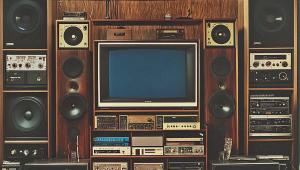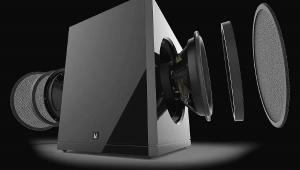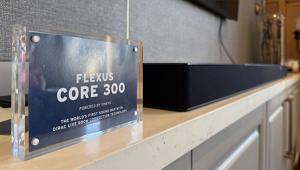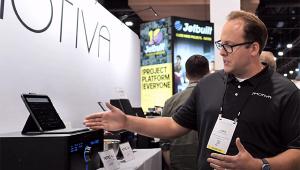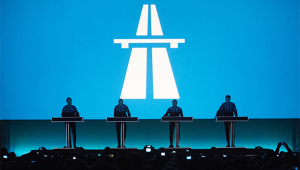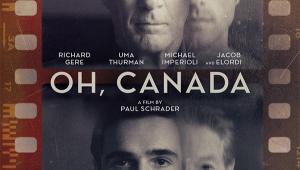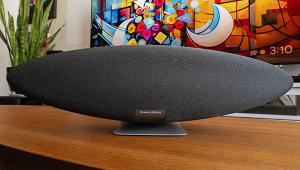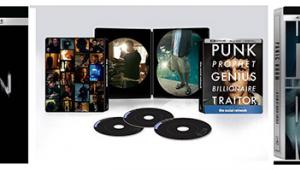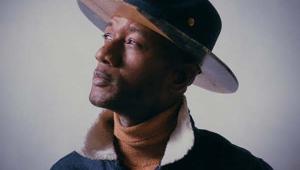CEDIA Expo 2005 Loudspeakers
by Fred Manteghian
It's so easy to get to Indianapolis. First, you wait until late at night when you're really tired and hop on the Internet to buy a ticket to Minneapolis. The next day, when a commercial for the second season of the Mary Tyler Moore DVD box set nudges your brainbot enough for you to realize you've done something incredibly stupid, even for you, you call Travelocity and beg to cancel your non-refundable, non-transferable and non-changeable ticket. When Judy the operator tires of sharing your story with her guffawing cubicle mates and finally lets you off the hook so you can order tickets to the correct city you make a mental note to yourself to set your alarm clock for 4 PM instead of 4 AM to catch your 7 AM flight, relying only on the rumble of the garbage truck at 5:30 AM to give you all the adrenaline you'll ever need to drive the 50 miles to the airport and still catch your flight.
Glad I made it. There was lots of great stuff to see. I'm covering speakers. Nothing I haven't done in the past, but this year, I couldn't ignore the huge amount of in-wall speakers on display. PSB had their CS800E in-wall in display, three across the front with the center rotated 90 degrees. The three-way CS800E speakers are said to be flat to 40 Hz. Playing the Eric Clapton Crossroads concert DVD, which featured other well known guitarists, I was most impressed with Vince Gil. The speakers did a great job bringing out Gil's ability to mimic a steel player at times without even using a slide. For $5,500/pair this isn't your Daddy's in-wall speaker.
The PSB's are cheap compared to the BG (the company formerly known as Boelender Graebener) in-wall ribbon and woofer hybrids. For $10,000/pair the machined aluminum baffle Radia R-800 come with an external 1000-watt per channel stereo amp, the BGA-2500, using B.A.S.H. technology to power the two 8" woofer cones in each panel. There are six planar midrange and 16 planar tweeter panels in each speaker. The R-800 is almost 7-feet tall, so think big if you're considering them. The Radia R-88, a separate in-wall sub with dual 8" drivers in a completely enclosed unit, comes with a BGA-2500 amplifier as well for $3,000. Adding another dual 8" driver cabinet to take advantage of the second channel in the amp adds $1,000.
Jeff Joseph of Joseph Audio showed a pair of reasonably priced $2,000/pair in-walls speakers called "The Insiders" (named for his mother-in-law Pearl's brush with insider trading I believe, though he was being unusually evasive). Finding an infinite number of uses for his "Infinite Crossover" technology, Jeff is proud of the fact that through trickery and chicanery (and I suppose the crossover design) he can hit the sweet spot of a seated listener even when the Insiders are mounted well above ear level, as is frequently the custom in a custom installation. Speaking of sweet spots, Jeff's time-honored bowl of M&Ms was empty when I arrived, so I just sat down to listen. I've always considered the crunchy drone of the candy coating an integral part of the Joseph "house sound," but I'm glad to report they perform even better without all the racket going on in my head. The music just melts in your mind, not in your hand.
Designed especially for use with flat panel speakers, Artison offers speakers that attach to the side of the display device. Once attached using supplied brackets they can be spread somewhat for additional separation. Each contains a left or right channel, as appropriate, but what makes them special is that each also contains half of a center channel speaker. In a controlled demonstration this spread center channel didn't sound bad at all, creating a decent center image that worked reasonably well off-center. Certainly configuring an A/V receiver for a phantom center channel setup would suffice for anyone who always sits dead center, but the Artison Sketch ($1,100/pair), Portrait ($1,700/pair) and Masterpiece ($2,500/pair) do a credible job for the plasma in the den. Crazy you say? With Plasma prices dropping, it won't be long until you start running into folks that have a second set.
Moving away from the wall, there were plenty of interesting new additions to our hobby. Canton has redesigned their Ergo series, a staple in their line for many years, incorporating changes in driver and crossover technology developed as part of their new Vento line. The Vento line itself gets a new edition in the form of the AS 850 subwoofer. Using a 12" woofer and built-in 350-watt digital amplifier, the subs claim to fame is the aluminum cone driver's 2-1/2" travel distance. $2,500 each.
Another subwoofer that got my attention was the JL Audio Gotham, using two 13.5" woofers coupled to a built-in 3800-watt amplifier and placed in a curved back cabinet. A smaller Fathom speaker uses a single driver. Three of the Gotham subs ($7,500/ea) and two of the Fathom subs ($3,000/ea) were setup in a demo room. With Bryston amps, a Parasound Halo processor, the SIM2 C3X projector and a full complement of PMC speakers trying to keep up with the subs, the Fathoms and Gothams definitely pounded home their point. I believe sitting between two of the Gothams would constitute an effective therapeutic massage, so there may even be a medical tax deduction angle as well. While the demo was obviously devised with overkill in mind there's no doubt the JLs were quality devices worthy of a high-end theater. But, you might want to go for just one (I think the small one will do).
Earthquake had an in-wall sub driven by an external 600-watt amp. One stereo amp and one speaker cost $1899, and a second in-wall sub could be added for another $999. Given their reputation for producing some of the most powerful subs in the market I'm not sure how I feel about putting an amp called Earthquake into the wall of my house. I've seen what earthquakes do to a house. Maybe I'd put it in my neighbors house first.
Wharfedale was getting nice sound from their very reasonably priced Evolution line of conventional speakers. From $800/pair to $1,500/pair, they looked quite good and would be worth a long audition. Wharfedale has a 350-watt powered subwoofer as well, the Evolution SW-300 that starts at $1,300. Overall, a fine sounding and beautiful looking system that belied its reasonable cost.
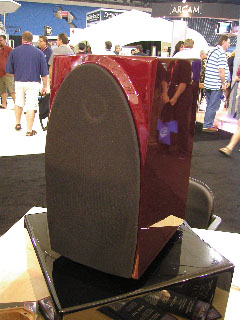 The folks from Wilson Audio weren't around on Sunday, but they left their speakers up and provided product literature. If you've ever had a Wilson Audio speaker you know that no one is going to casually try and walk off with one. Their latest, the small (by Wilson standards) Duette, uses a crossover housed in a smaller box.
The folks from Wilson Audio weren't around on Sunday, but they left their speakers up and provided product literature. If you've ever had a Wilson Audio speaker you know that no one is going to casually try and walk off with one. Their latest, the small (by Wilson standards) Duette, uses a crossover housed in a smaller box.
I admit I don't get it because now you have two boxes. But it will fit into a bookshelf, which I think was the goal. It looked like it sounded good.
Focal (the company formerly known as Focal.JMLab) has a new Profile line of speakers. The speakers share characteristics like the gently sloped front baffle and elliptically curved back found in the 908, 918 and 928 "main" speakers. Their middle-of-the-line stereo pair, the model 918, is a three-way that sells for $3995/pair. The larger 928 speakers are $5,500/pair and include two additional drivers for better bass extension, but the $2995 SW 908 subwoofer would do the job as well and is a must for home theater. The smaller 908 ($2,295/pair) look ready to play the part of monopole surrounds. The CC 908 is a three-way center ($1695/each). A gorgeous looking system that demands a listen.
NHT (the company once known as Now Hear This) has a small three-piece equalized speaker system- the XD- that I've heard sound remarkable. But they're remarkably priced as well so let me tell you about their reasonably priced and exciting new Classic line. Why Classic? Remember the NHT numbering sequence for their models of the 1980s and early 1990s? The NHT Zero, which sounded nice but earned a zero for looks, are now a definite 8.5 in the reworked Classic line. Called the Absolute Zero now, this $400/pair mini-speaker will doubtless find many fans. Not me- I'm looking at the big Four ($1,800/pair,) which is a four-way floor standing line with the modular midrange/tweeter array common to the Classic line plus a front firing lower frequency driver and a 10" side loaded woofer. The model Three ($800/pair) is essentially a Four in a bookshelf size (less the side firing woofer), and would be perfect for timbre-matched rear and side channels. The Three C center channel ($600/each) is a proper one, with a vertically oriented tweeter / midrange array plus dual 6.5" speakers. Add the model Twelve subwoofer with a 12" driver and a 250-watt amp – heck for $850, you might want to add two – and you've got the beginnings of a surround system that should serve multichannel music equally well.
CEDIA moves to the Rockies next year. I can't wait. I've never been to Spain.
- Log in or register to post comments









